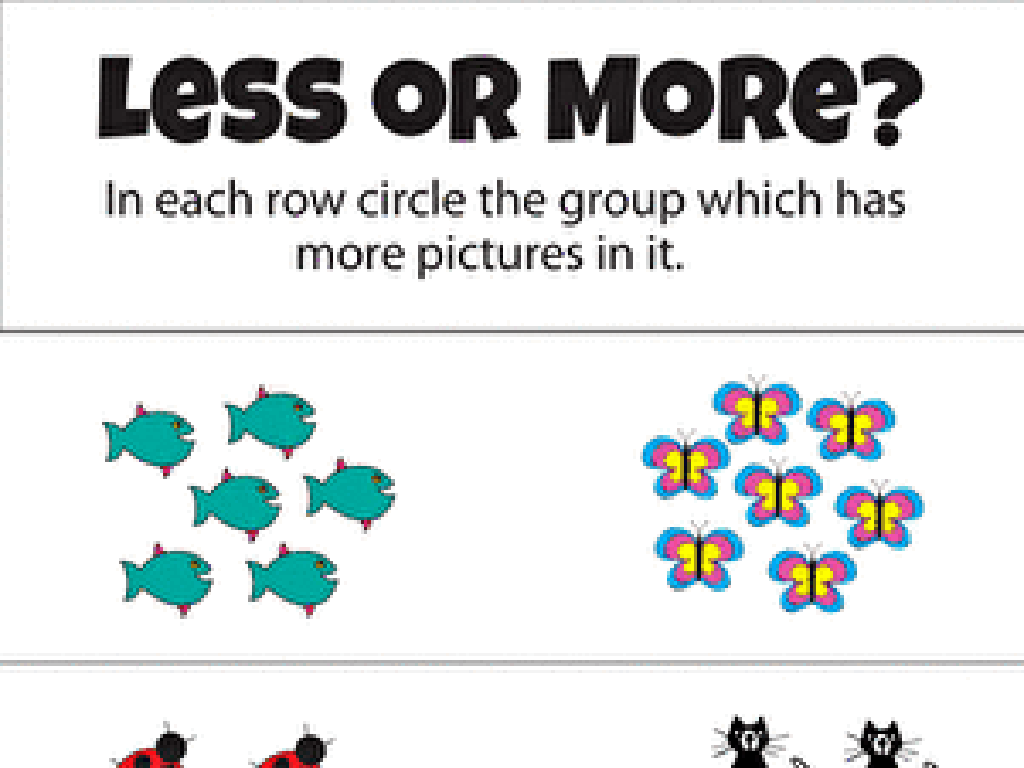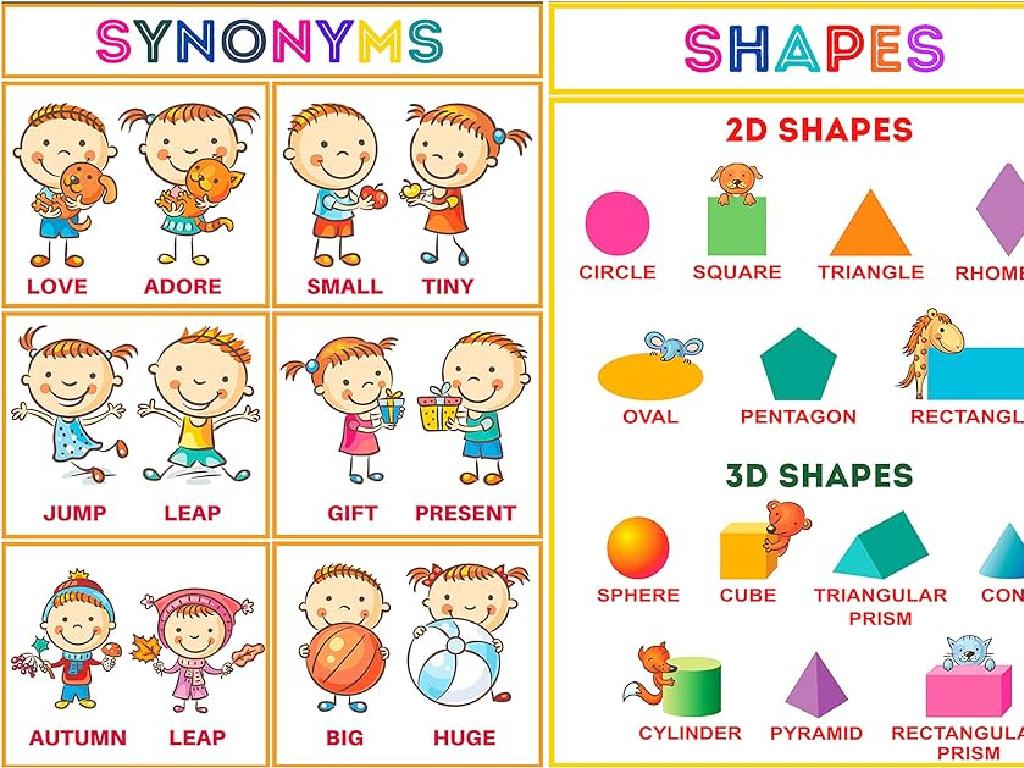Solve Two-Step Inequalities
Subject: Math
Grade: Seventh grade
Topic: One-Variable Inequalities
Please LOG IN to download the presentation. Access is available to registered users only.
View More Content
Introduction to Two-Step Inequalities
– Understanding inequalities
– Inequalities show how values relate, not equal but , d, or e
– Recap of one-step inequalities
– Review solving x + a > b (subtract a from both sides)
– Introducing two-step inequalities
– Learn to solve ax + b > c (two steps needed)
– Importance in problem-solving
|
Begin with a brief explanation of what inequalities are and how they differ from equations, emphasizing the symbols used to represent them. Recap one-step inequalities to ensure students have a solid foundation before moving on to more complex problems. Introduce two-step inequalities, explaining that they require two operations to isolate the variable. Highlight the importance of understanding two-step inequalities as they are widely applicable in algebra and help develop problem-solving skills. Provide examples and encourage students to think of real-life situations where inequalities are used.
Understanding Two-Step Inequalities
– Define two-step inequalities
– An inequality solved with two operations, like 2x + 3 > 7
– Compare to one-step inequalities
– Unlike one-step (x + 3 > 7), two-step involves an extra step, such as multiplication or division
– Real-life examples
– Budgeting allowance, or measuring ingredients
– Solving two-step inequalities
– Isolate the variable: subtract/add, then divide/multiply
|
This slide introduces the concept of two-step inequalities, which require two operations to solve, as opposed to one-step inequalities that require only one. Emphasize the importance of understanding the order of operations in solving these inequalities. Use relatable examples such as budgeting a weekly allowance or measuring ingredients for a recipe to illustrate how inequalities are part of everyday decision-making. Demonstrate the process of isolating the variable by performing addition or subtraction first, followed by multiplication or division, to solve the inequality. Encourage students to practice with various examples to gain confidence in solving two-step inequalities.
Solving Two-Step Inequalities – Step 1
– Identify the variable to solve for
– Isolate the variable on one side
– Use inverse operations for +/-
– Subtract or add to both sides to undo + or –
– Example: Solve 3x + 4 > 10
– Subtract 4 from both sides: 3x > 6
|
This slide introduces the first step in solving two-step inequalities, which is crucial for understanding how to find the solution set for these types of problems. Start by identifying the variable and then isolate it on one side of the inequality. To do this, perform the inverse operation for addition or subtraction, which means doing the opposite action to both sides of the inequality to maintain balance. For example, if you have 3x + 4 > 10, you would subtract 4 from both sides to get 3x > 6. It’s important to remind students that whatever operation is performed on one side of the inequality must be done to the other side as well. This step sets the stage for the next operation, which involves multiplication or division, to completely isolate the variable and solve the inequality.
Solving Two-Step Inequalities: Step 2
– Perform inverse operations
– To isolate the variable, do the opposite of multiplication or division
– Flip sign when using negatives
– If you multiply/divide by a negative, the inequality direction changes
– Example: Solve 3x > 6
– What is x if 3 times x is greater than 6?
– Divide both sides by 3
– Result: x > 2
|
This slide focuses on the second step in solving two-step inequalities: performing inverse operations for multiplication or division. Emphasize the importance of doing the same operation on both sides of the inequality to maintain balance. Highlight the critical rule that when multiplying or dividing by a negative number, the inequality sign must be flipped. Use the example 3x > 6 to demonstrate the process. Divide both sides by 3 to isolate x, resulting in x > 2. Ensure students understand why the inequality sign does not flip in this case (since 3 is positive) and encourage them to practice with similar problems.
Graphing Two-Step Inequalities
– Graphing solutions on a number line
– Plot the solution range for the inequality on a number line.
– Open vs. closed circles usage
– Open circle: > or <, Closed circle: e or d
– Graph the previous example's solution
– Use the example to illustrate graphing steps.
– Practice with different inequalities
|
This slide is aimed at teaching students how to graph the solutions of two-step inequalities on a number line. Begin by explaining the significance of the number line in representing possible solutions. Discuss the difference between open and closed circles, emphasizing that open circles represent ‘greater than’ or ‘less than’ without including the number itself, while closed circles mean ‘greater than or equal to’ or ‘less than or equal to’ and include the number. Demonstrate the graphing process using an example from a previous lesson, and then provide additional inequalities for students to practice graphing. Encourage students to ask questions if they’re unsure about which type of circle to use or where to place it on the number line.
Solving Two-Step Inequalities: Practice
– Solve 2x – 5 d 7
– Add 5 to both sides, then divide by 2
– Solve -4y + 8 > 0
– Subtract 8 from both sides, then divide by -4, remember to flip the inequality sign
|
This slide is aimed at providing students with practice problems to apply their knowledge of solving two-step inequalities. Start by solving the first inequality together. Add 5 to both sides of 2x – 5 d 7 to isolate the term with the variable, resulting in 2x d 12. Then, divide both sides by 2 to find the solution x d 6. For the second problem, begin by subtracting 8 from both sides of -4y + 8 > 0, yielding -4y > -8. When dividing by -4 to solve for y, it’s crucial to remember to reverse the inequality sign, leading to y < 2. Encourage students to work through these steps and discuss why the inequality sign flips in the second problem. Provide additional similar problems for students to solve independently, and use this slide as a reference for the steps involved in solving two-step inequalities.
Class Activity: Solve & Graph Two-Step Inequalities
– Pair up and solve assigned inequalities
– Graph solutions on a number line
– Mark the solution set and test points
– Discuss solution methods with partner
– Did you both get the same solution?
– Share findings with the class
|
This activity is designed to promote collaborative learning and reinforce the concept of solving two-step inequalities. Students should be paired up and given a set of inequalities to solve. Encourage them to discuss their solution methods with their partner to foster peer learning. Once they have their solutions, they should graph them on a number line, ensuring they understand how to represent the solution set visually. After completing the activity, each pair will share their solutions with the class, allowing for a discussion on different methods used and reinforcing the learning objectives. Possible activities for different pairs could include solving for different variables, using inequalities from real-life scenarios, or challenging them with inequalities that have negative solutions.
Review and Reflect: Two-Step Inequalities
– Key steps in solving inequalities
– Isolate the variable: undo addition/subtraction, then multiplication/division.
– Flipping the inequality sign
– When multiplying/dividing by a negative number, the inequality direction changes.
– Checking solutions
– Substitute the solution back into the original inequality to verify.
|
This slide aims to consolidate students’ understanding of solving two-step inequalities. Emphasize the systematic approach to isolating the variable, which involves undoing addition or subtraction first, followed by multiplication or division. Highlight the critical concept of flipping the inequality sign whenever we multiply or divide by a negative number, as this is a common area of confusion. Encourage students to always check their solutions by substituting them back into the original inequality to ensure they make sense. This not only reinforces their learning but also builds their confidence in solving inequalities.
Homework: Solving Two-Step Inequalities
– Solve each two-step inequality
– Graph solutions on a number line
– Plot your answers to visualize the solution range
– Be ready to discuss in class
– Think about the steps you took to solve the inequalities
– Practice makes perfect!
|
This homework assignment is designed to reinforce the concept of two-step inequalities learned in class. Students are expected to apply inverse operations to isolate the variable and solve the inequalities. They should then graph their solutions on a number line to visually represent the range of possible solutions. Encourage students to check their work by substituting the solution back into the original inequality. In the next class, we will have a discussion where students can share their solutions and the strategies they used. This will help them understand different approaches to solving inequalities and solidify their understanding of the topic.






